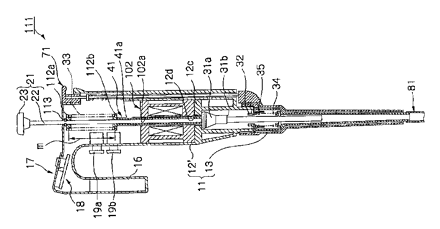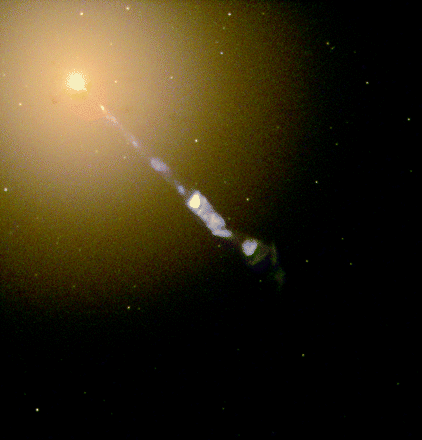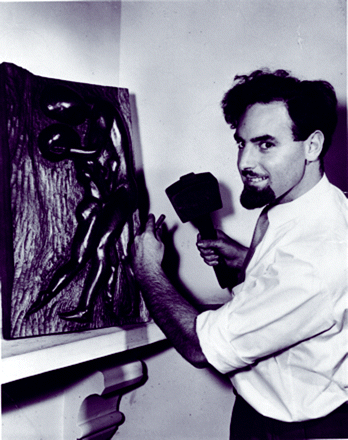1971–1980
Little Wonders
What we today hail as a world-wide “webolution” grew out of a 1970s marvel the first modern microprocessor. In 1971, a semiconductor company in its virtual infancy introduced its Intel 4004 central processing unit. The microprocessor, measuring in millimeters, allowed engineers to replace rooms of cabinetry previously used to store computer circuitry with a desktop unit. The flow of information in miniature revolutionized the ways we work, play, and communicate. Information flow on the small scale was also investigated in the 1970s by J. Michael Bishop and Harold E. Varmus. They showed that viral oncogenes originated from cellular genes that regulate cell growth and development. Uncontrolled cell proliferation could thus be traced to the mutation of normal genes, and what had been a fascinating theory of oncogenesis became the very real foundation for new advances in cancer biology.


Short Cuts
The automation conferred by computers was mirrored in biomedical laboratories with the discovery of naturally occurring enzymatic tools for manipulating DNA with pinpoint accuracy and remarkable speed. Daniel Nathan, Werner Arber, and Hamilton Smith were awarded the 1978 Nobel Prize for discovering bacterial enzymes that recognize and cleave specific sequences in DNA. Soon, labs around the globe were able to isolate and study their “favorite gene.” The potential to work with genetic material using tools like restriction endonucleases and ligases was not lost on pharmacologists. Molecular pharmacology quickly enriched the discipline through the identification of drug targets, metabolic idiosyncrasies, and potential biologic therapeutics. Another indispensable tool of pharmacologists was patented in 1973 the automatic pipette.
Going Up
The innovative spirit of the1970s was by no means confined to the small scale. At 1,472 feet, the Empire State Building in New York City had been the tallest building in the world since 1931. In 1972, the 1,727-foot World Trade Center was erected, although it did not reign supreme (at least in terms of height) for long. Two years later, in 1974, the Sears Tower in Chicago inched its way into the record books, completing construction at 1,730 feet. Even farther beyond the surface of the earth, the dynamics of space and time became the focus of the young Stephen Hawking, who gained professional notoriety with his work on black holes. In 1974, he surprisingly calculated that black holes densities of mass so great that matter, including light, cannot escape them produce radiation (now known as Hawking radiation) in a process through which they consume their own energy and disappear. Hawking’s work, as well as his life as a wheel-chair bound paralytic who grasped the boundless universe through shear thought, would captivate public imagination a decade later with his best-selling A Brief History of Time.

Pure Nerve
In 1972, a paper was published in Pharmacological Reviews by a British pharmacologist and ex-boxer named Geoffrey Burnstock, who had suggested that the primary neurotransmitter in non-adrenergic, non-cholinergic nerves was a purine nucleotide. Burnstock showed that adenosine triphosphate, or ATP, was stored as a cotransmitter that was released from cells to induce inhibitory junction potentials in the guinea pig colon. His theory was met with significant resistance by a scientific community that exclusively regarded ATP as the energy source of the cell. Burnstock persisted in his description of “purinergic nerves” and launched a new field of research. Investigators of purinergic signaling would soon uncover the existence of a broad class of nucleotide-activated ionotropic and metabotropic receptors, expressed in nearly every cell of the body.


Strong with the Force
By the end of the 1970s, the decade-long Vietnam War was over, disco’s popularity was at its peak, and some of the most popular movies of modern time were preparing for encores at the box office. Star Wars, the epic space drama set “a long time ago in a galaxy far, far away” was released in 1977. The movie’s simple theme the hard-won triumph of good over evil grossed nearly $800 million dollars worldwide. After spinning two sequels and three “prequels” over the following three decades, the original film would be renamed Star Wars Episode IV: A New Hope. Jaws (1975), Rocky (1976) and The Godfather (1972) were also mega-hits, each grossing more than $200 million worldwide and inspiring multiple sequels in the 1980s and 1990s.

- © American Society for Pharmacology and Experimental Theraputics 2008





